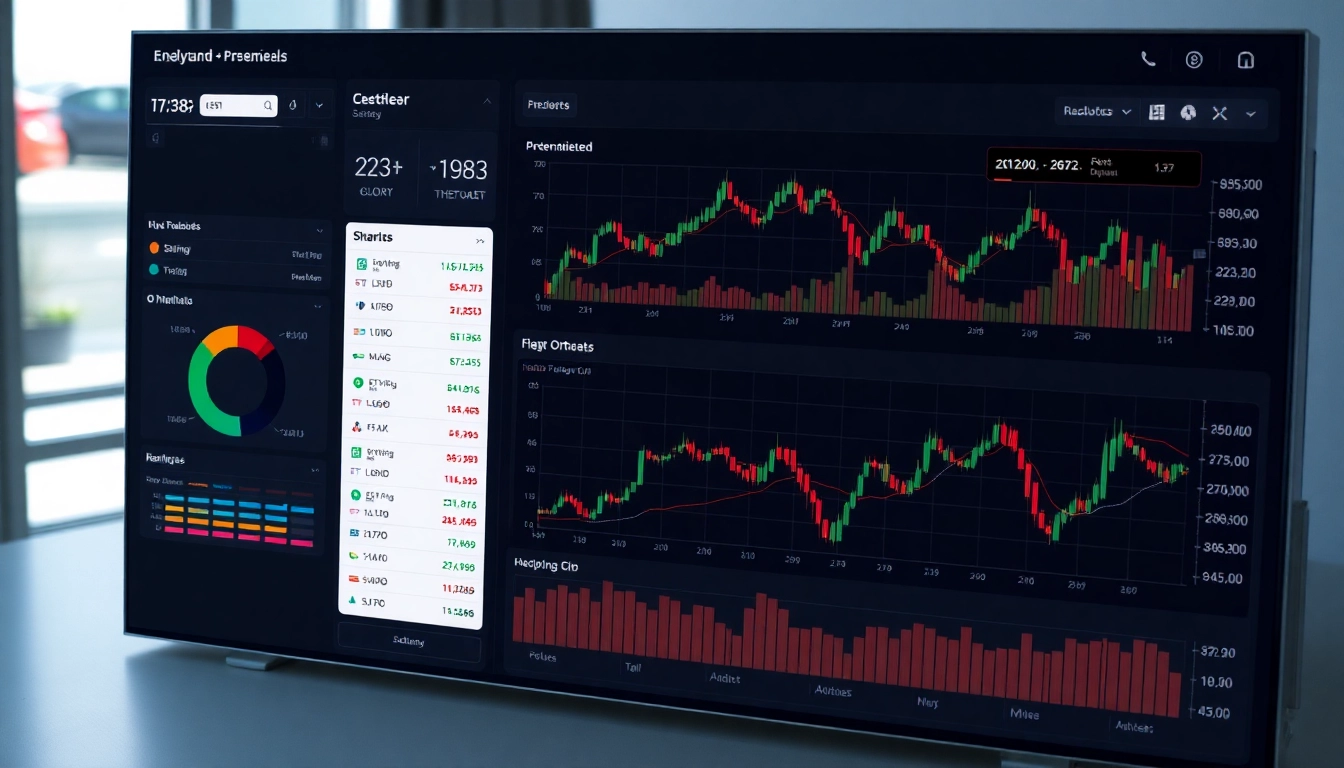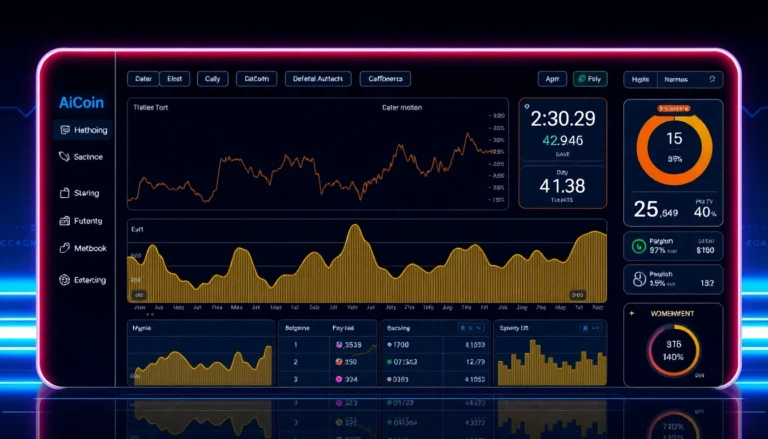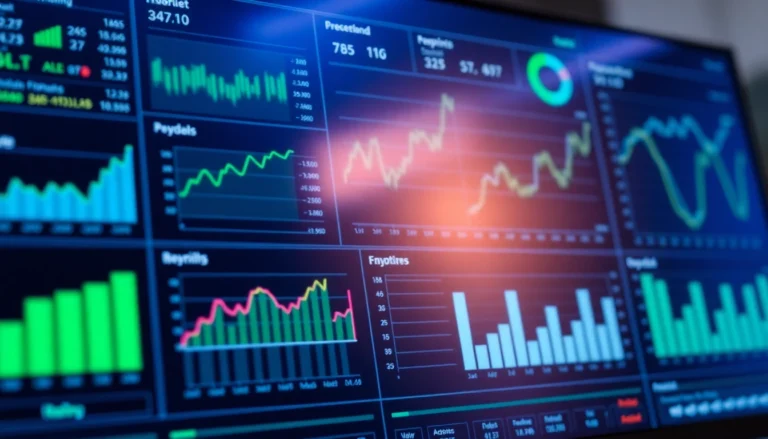Understanding Trading View: Features and Functionality
In today’s fast-paced financial markets, having access to powerful charting tools and real-time data is essential for traders and investors aiming to make informed decisions. Among the leading platforms in this domain is trading view, renowned for its comprehensive features, user-friendly interface, and active community. Whether you’re a beginner seeking simple charts or a seasoned professional conducting complex technical analysis, understanding the core tools and functionalities of trading view is vital to leveraging its full potential.
Introduction to Trading View’s Core Tools
Trading view offers an array of core tools designed to facilitate market analysis. Its intuitive charting interface provides access to real-time data across multiple asset classes including stocks, cryptocurrencies, forex, commodities, and indices. Central to its appeal is the supercharged charting platform, which enables traders to visualize price movements with numerous customization options. Users can analyze historical data, overlay multiple indicators, and apply drawing tools to identify trends and key support or resistance levels.
The platform also incorporates social features, allowing traders to share ideas, comment, and discuss strategies directly within the interface. This fusion of social networking and technical analysis creates a vibrant environment where insights rapidly disseminate, fostering community-driven learning and collaboration.
Customizing Charts and Indicators
Customization is at the heart of trading view’s appeal. Users can tailor their charts with a vast selection of indicators such as Moving Averages, RSI, MACD, Bollinger Bands, and Fibonacci retracement levels. Advanced users can also create custom indicators using TradingView’s Pine Script language, enabling the development of proprietary analysis tools and algorithms tailored to individual trading styles.
In addition to technical indicators, traders can modify chart themes, color schemes, and timeframes to suit personal preferences or to facilitate better visual analysis. Whether analyzing minute-by-minute intraday charts or long-term weekly trends, the customization capabilities ensure that every trader can craft an ideal workspace for their specific needs.
Leveraging Social Trading and Community Insights
An outstanding feature of trading view is its integrated social trading network. The platform hosts a vast community of traders and investors who share ideas, trading setups, and market forecasts. Community ideas, publicly shared charts, and discussion threads enable novice and experienced traders alike to gain insights and refine their strategies.
Furthermore, traders can follow prominent analysts, comment on shared ideas, and participate in live discussions. This collaborative environment amplifies learning opportunities and provides real-world validation for technical setups, fostering a dynamic learning ecosystem that extends beyond individual analysis.
Implementing Effective Trading View Strategies
Technical Analysis Using Trading View
Technical analysis forms the backbone of many trading strategies, and trading view simplifies this process with its robust set of tools. Traders can identify chart patterns such as head and shoulders, triangles, or double tops and bottoms, alongside using technical indicators to confirm signals. Combining multiple indicators and overlays enables more precise entry and exit decisions.
For example, a trader might use Fibonacci retracements combined with RSI divergences to pinpoint optimal trade entries during a trending market.
Developing Personalized Trading Watchlists
Creating and managing watchlists is fundamental to monitoring multiple assets efficiently. Trading view allows users to customize watchlists with assets relevant to their trading plan, set alerts for price levels or indicator signals, and organize assets by themes or sectors. This proactive approach ensures you stay alert to market movements that matter most to your strategy.
For instance, a forex trader might have a watchlist comprising all major currency pairs, coupled with alerts for crossing moving averages or volatility spikes.
Automating Alerts and Notifications for Timely Decisions
Timeliness is crucial in trading, and trading view’s alert system optimizes decision-making. Users can set alerts based on price levels, indicator conditions, or pattern formations. These alerts can be delivered via email, SMS, or platform notifications, ensuring traders respond swiftly to market opportunities or risks.
Automated alerts help avoid missed trades during busy periods, allowing traders to act only when specific conditions are met, thus reducing emotional bias and enhancing discipline.
Optimizing Trading Performance with Trading View
Integrating Trading View with Other Platforms
One of trading view’s strengths lies in its ability to integrate seamlessly with various trading platforms, brokerage accounts, and data providers. Through API connections or third-party integrations, traders can execute trades directly from charts, synchronize watchlists, and manage positions across multiple accounts.
This integration streamlines trading workflows, reduces manual input errors, and enhances real-time responsiveness.
Monitoring Key Market Indicators in Real-Time
Keeping an eye on key market indicators like volume, volatility index, and economic data releases is vital. Trading view’s real-time data streams and customizable dashboards facilitate continuous monitoring of pertinent metrics. Incorporating economic calendar widgets or news feeds within the platform ensures traders remain aware of fundamental factors impacting markets.
For example, tracking volume spikes alongside price breakouts can confirm genuine trend moves versus false signals.
Analyzing Historical Data for Future Trends
Historical data analysis enables traders to recognize recurring patterns and estimate future price action. Trading view’s extensive historical archives and backtesting features allow users to validate strategies over different periods and market conditions. This process helps refine entry points, stop-loss placements, and target levels, increasing trading robustness.
Overcoming Common Challenges in Market Analysis
Managing Information Overload
With vast data and numerous tools at hand, traders often face information overload. To address this, it’s essential to develop a structured approach—focusing on key assets, setting specific criteria for signals, and utilizing alert filters. Custom workspace layouts and pre-configured indicator templates can also streamline analysis, enabling quicker decision-making.
Interpreting Complex Charts and Indicators
Interpreting intricate chart patterns and multiple indicators can be challenging. Education and practice are crucial; traders should study various pattern formations and learn how different indicators interact. Trading view offers extensive tutorials, community ideas, and demo accounts to facilitate learning and confidence-building.
Staying Updated with Rapid Market Movements
Fast market changes demand real-time data and immediate response. Combining live alerts, mobile notifications, and quick access to chart updates helps traders adapt swiftly. Using features like one-click trading and automated order execution further enhances responsiveness and reduces reaction times.
Future Trends and Innovations in Trading View Tools
Emerging Features and Technological Advancements
Platforms like trading view continually evolve with technological advancements. Upcoming features include AI-driven analysis, machine learning integration for predictive insights, and enhanced customization options. These innovations aim to improve accuracy, efficiency, and user engagement.
Adapting Strategies to Market Evolution
As markets become more sophisticated, traders must adapt by integrating new tools and approaches. Emphasizing algorithmic trading, data analytics, and sentiment analysis will be parallel to technological progress, ensuring traders remain competitive and informed.
Enhancing User Experience through AI Integration
Artificial intelligence will play a larger role in personalizing trading experiences, providing real-time insights, and automating routine analysis. AI-powered chatbots, voice commands, and predictive analytics embedded into trading view platforms will enhance accessibility and decision support.








